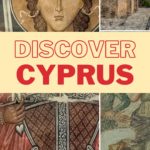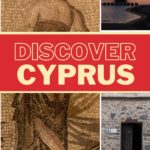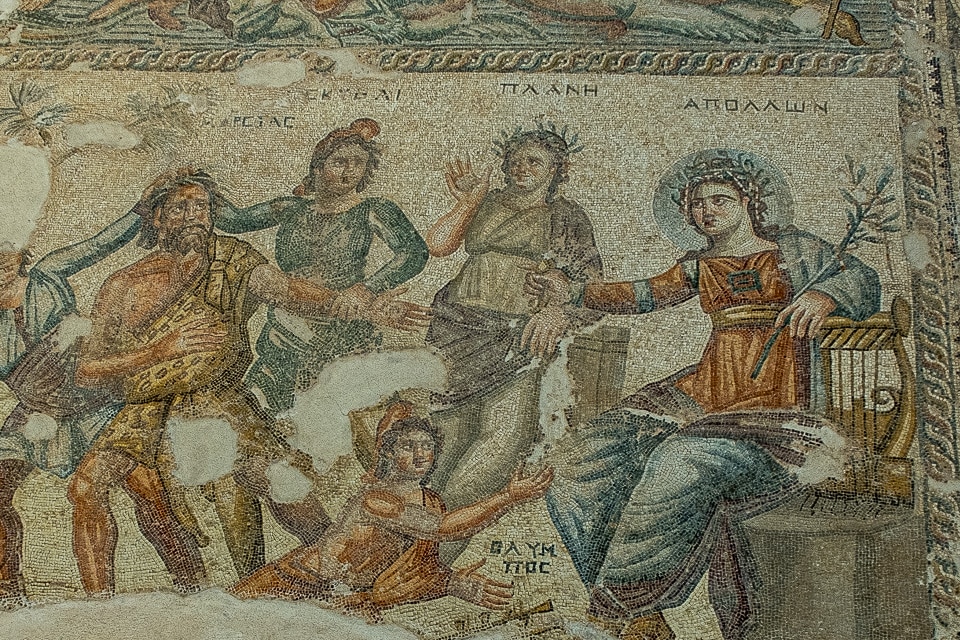
Cyprus is a beautiful island country with a rich cultural history and stunning landscapes which combine to make a fascinating place for a visit.
The history and culture that has been shaped by shaped by the island's location in the eastern Mediterranean and the various influences, especially of Greece and Turkey over the centuries. The island has many ancient ruins, museums, and historical sites that showcase its rich past. It should be noted that the island is politically divided between the country of Cyprus, and the so-called Turkish Republic of Cyprus in the north. We only visited the southern part of the island. Beware, most rental car companies will not let you take a car into Northern Cyprus. If you want to drive into Northern Cyprus, be sure your car rental company allows it.
In addition to its rich historical artifacts, Cyprus has some of the most beautiful beaches in the Mediterranean, with clear waters, golden sands, and stunning scenery. The island's beaches are ideal for swimming, sunbathing, and other water sports. The island has a diverse landscape that offers a range of outdoor activities such as hiking, cycling, diving, and skiing. The island's national parks, forests, and mountains are perfect for exploring.
Cyprus also has a rich culinary tradition that combines Mediterranean and Middle Eastern flavors. The island's cuisine is characterized by fresh ingredients, local herbs, and spices. Cyprus is also famous for its wine, which is produced from the island's vineyards. The white wines are particularly delicious.
Cyprus is an easy combination with a visit to other countries of the Middle East. (We flew to Cyprus from Jordan.)
Here are some of the best places to visit and things to see on Cyprus.
Table of Contents
The Mosaics of Ancient Paphos
The ancient city of Paphos, at the edge of the current city of Paphos, is called the city of mosaics. Not a bad thing to be known by. The ancient parts of the city are, collectively, a Unesco World Heritage site. They are spread over various parts of town, but for the most part, so indeed distinguish themselves with lots of excellent mosaics.
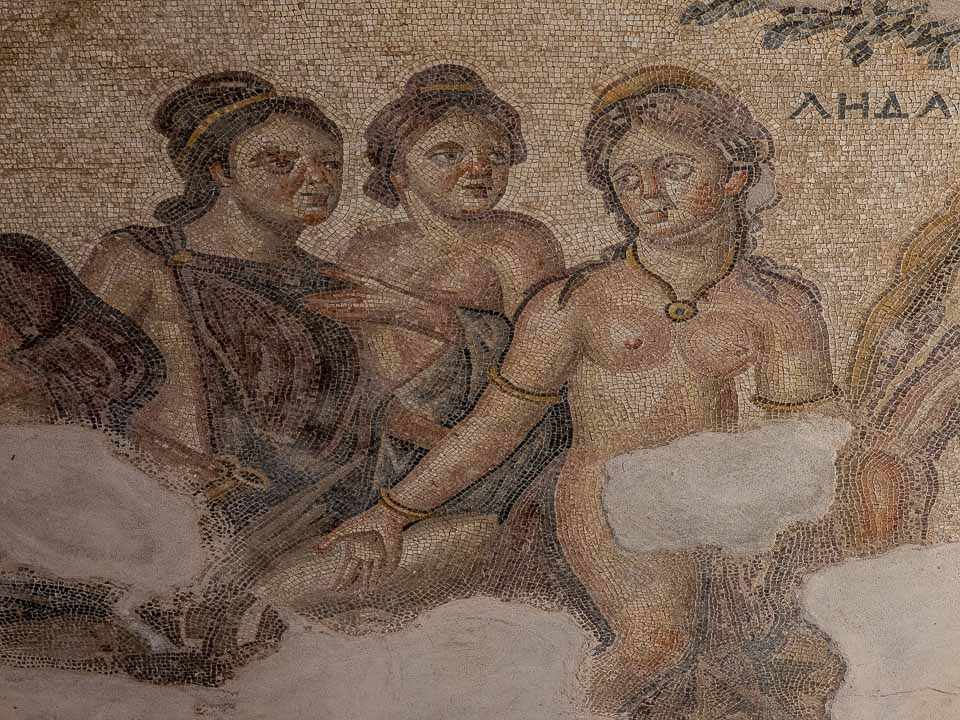
These five mosaics are in three excavated homes of what obviously was the wealthy part of town. The House of Aion is the smallest of the three, but, for me, has the most delicate and expressive of the works. The Leda at her bath, who is about to meet Zeus in the form of a swan, is a marvel in its detail, which rivals that of a fresco. Unfortunately, the walls of all these homes are gone, so there no frescoes to compare with.
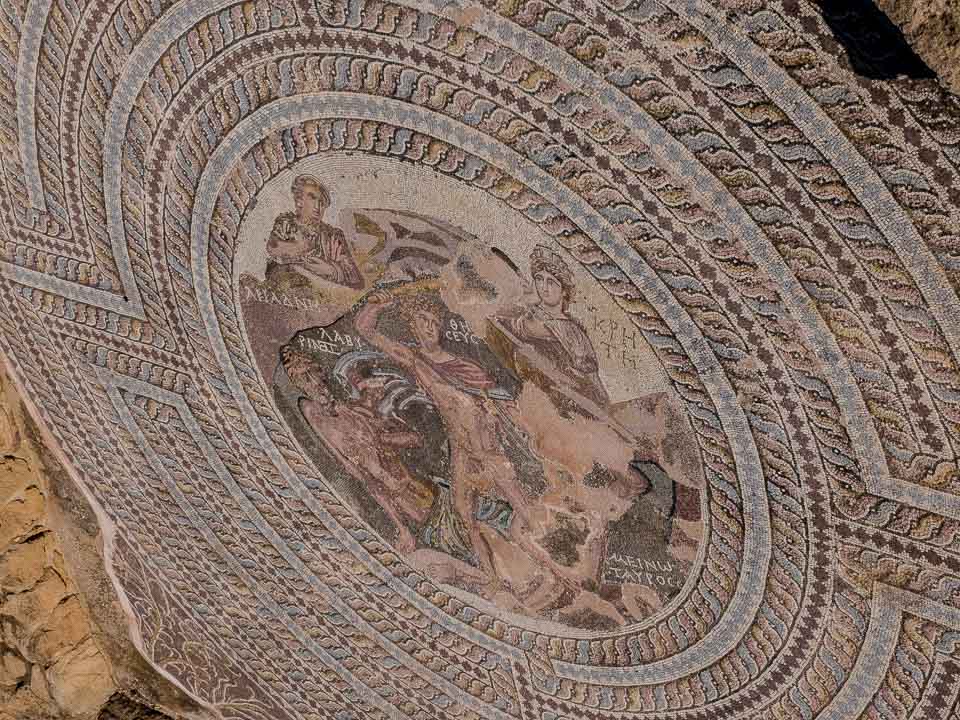
The House of Theseus is a huge home, with over 40 rooms, but unfortunately many of the mosaics are covered for protection and you can only see them on the signs posted next to where they are buried in sand. I love though, that this Theseus and the Minotaur is exposed, and that the surrounding mosaic is in the form of a labyrinth.
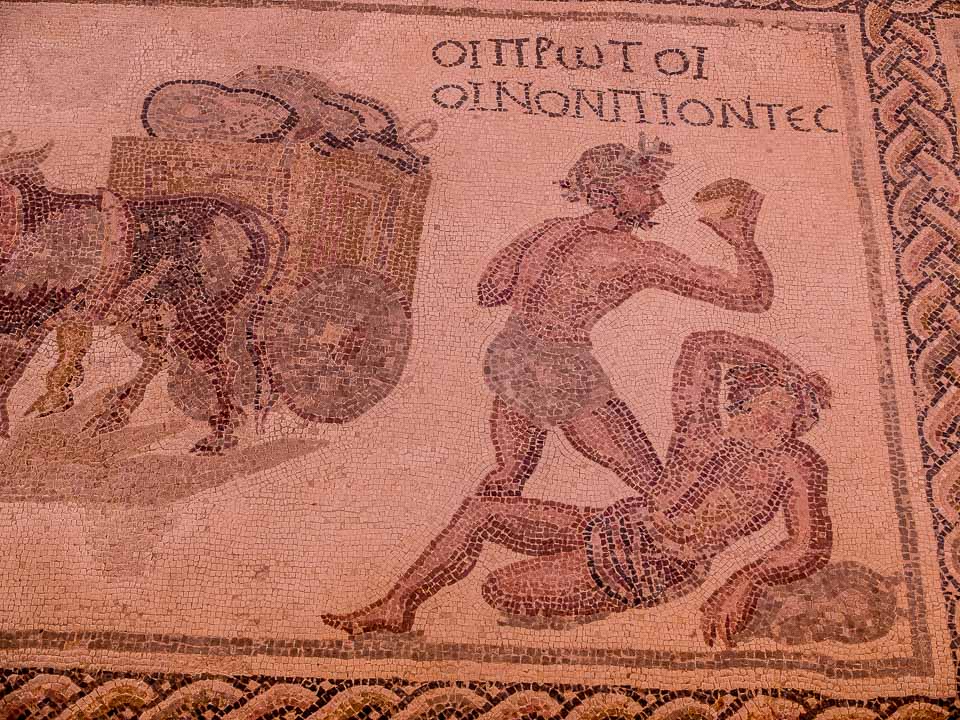
The House of Dionysus is also large, with perhaps 20 rooms, and it has been totally enclosed with new modern walls and a roof, so all the mosaics are visible. They've built an elevated walkway throughout the new building over the ruins of the interior walls. So, you can see all the floors of the rooms and their mosaics.
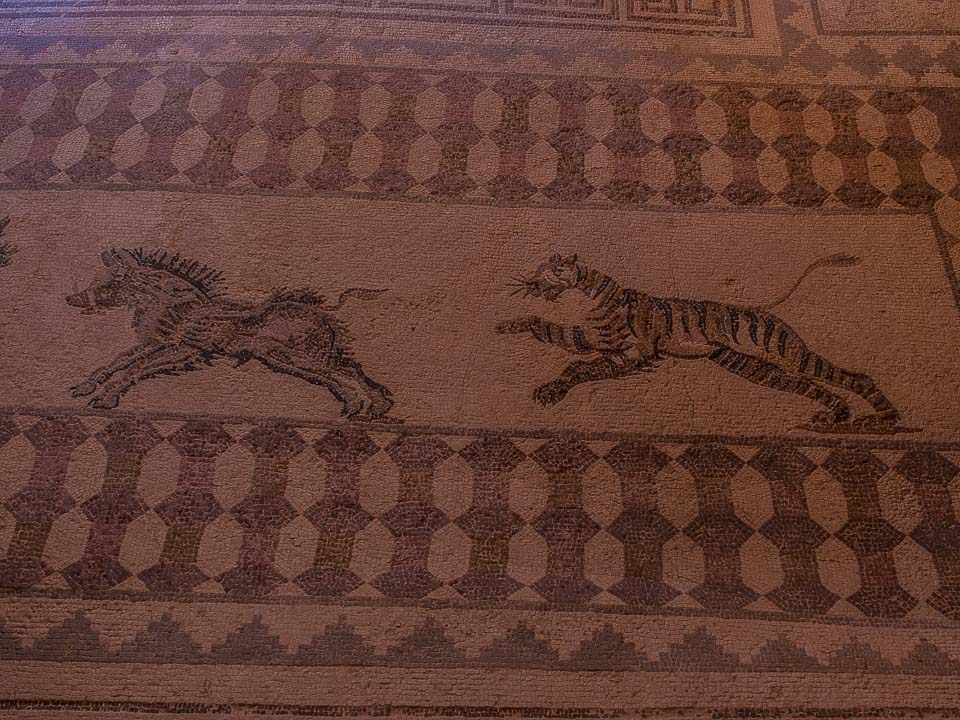
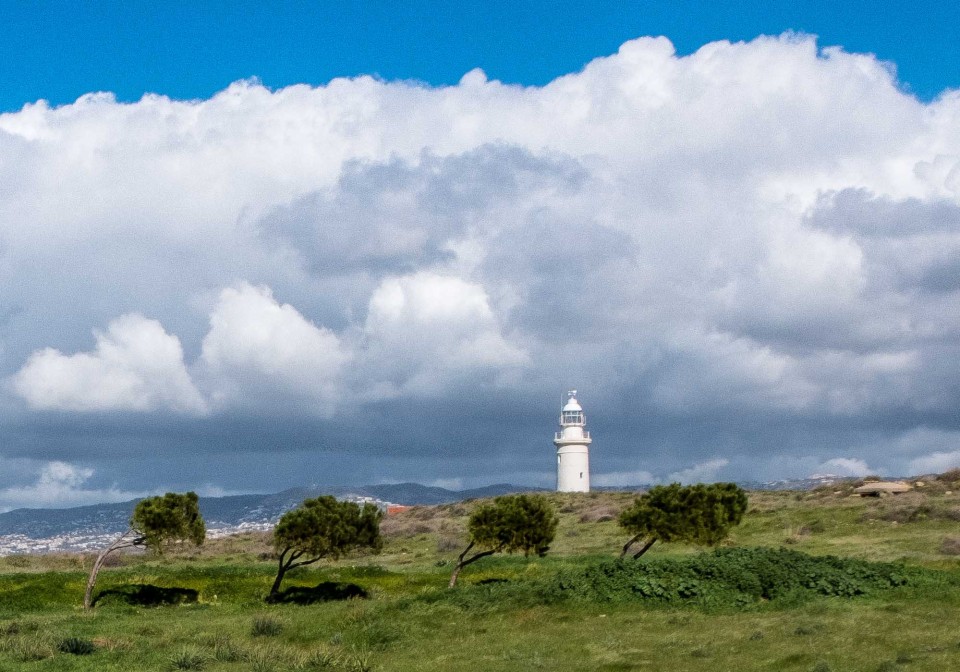
As a bonus when walking around Paphos, you'll see vistas like this–a reminder of the constant sea wind that aided sailors for thousands of years.
The Painted Churches of Troodos
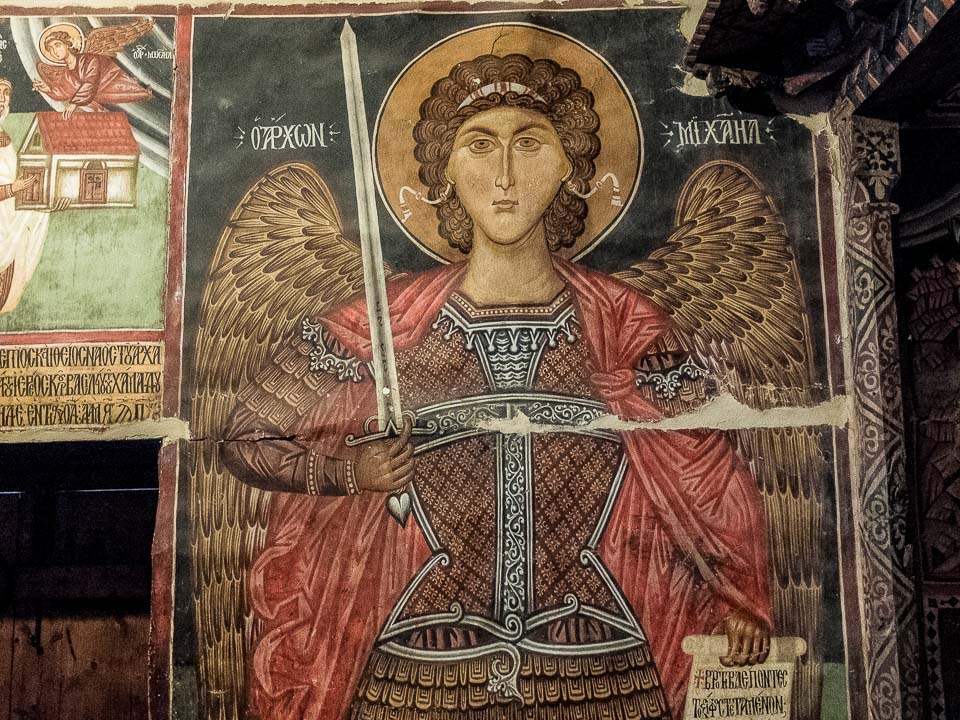
The 10 so-called Painted Churches of the Troodos Region of Cyprus collectively make up an Unesco World Heritage site. Unfortunately for anyone trying to visit them, finding them open for viewing is a rather hit and miss affair. We rented a car and spent a few hours trolling the Troodos area mountains for these churches. We found three of them, after a lot of false starts up some rather dicey mountain roads. Unfortunately, of the three we reached, only one was open, the Archangel Michael church in Pedhoulas.
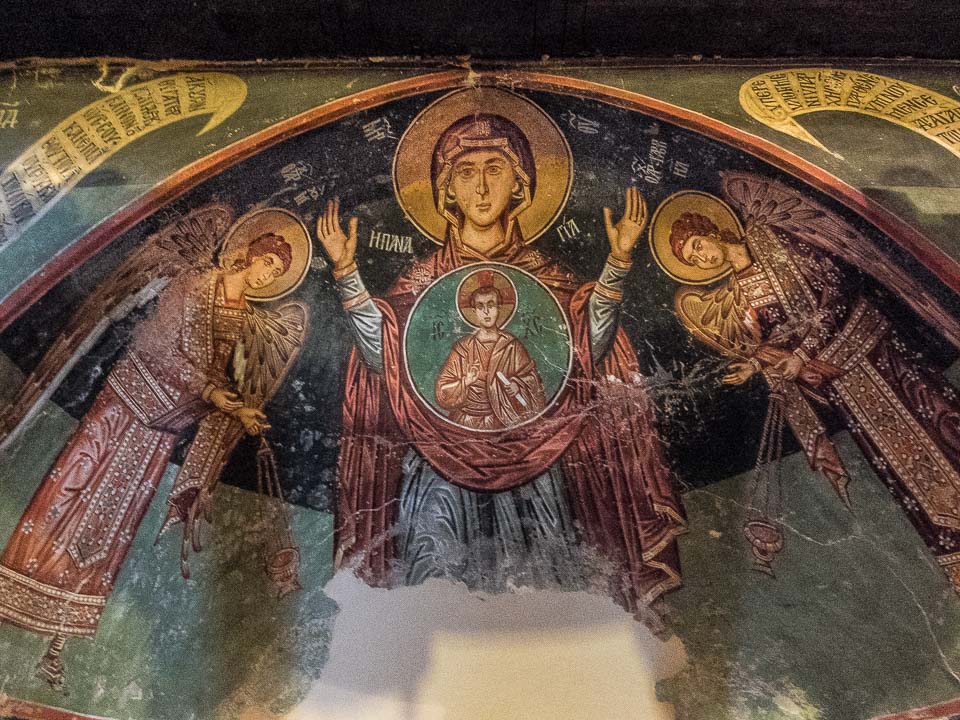
But, it was worth the drive and time, because it was spectacular. Most of the 10 churches were painted in the 12th Century in the distinctive Byzantine style of the era. But the Archangel Church of Pedhoulas was done about 200 years later. The name of the painter has been lost, and some of the literature about the church defines him as a mere copyist without his own distinctive style.
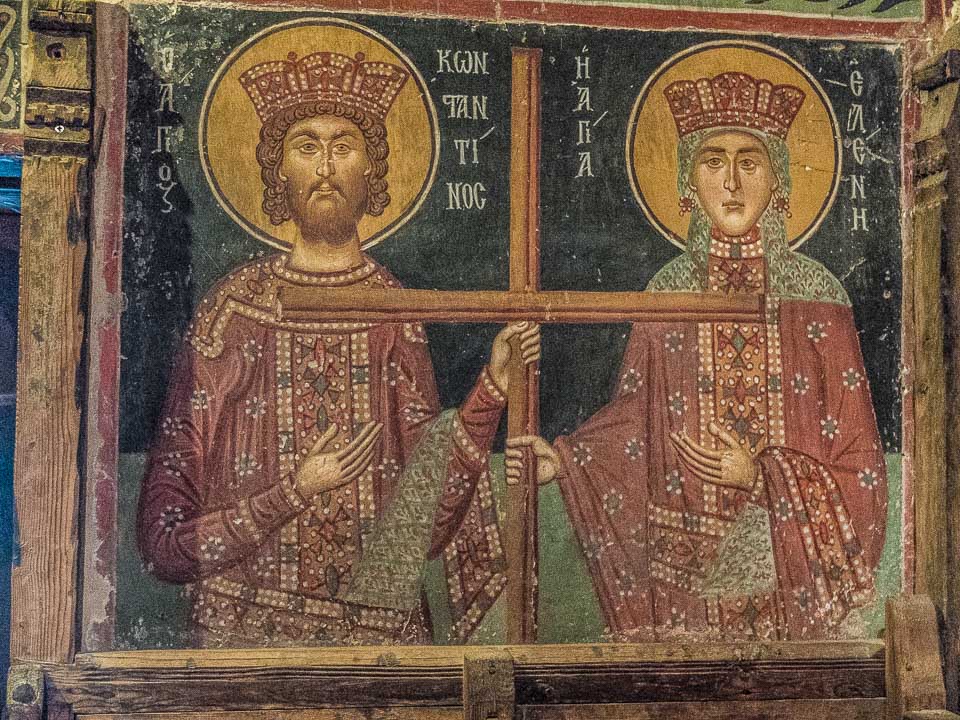
However, it seems to me that he wielded his brushes confidently, and his work is bold, colorful, and fascinating. I'm sorry we didn't get to any other of the churches, but we're definitely going back to Cyprus some day to see the rest. Before we do, though, I'm going to figure out how to arrive at them all coincident with someone who can open them up to viewing. Because if the ones we didn't see are even better than this one, I'm going to be very sorry if I never see them.
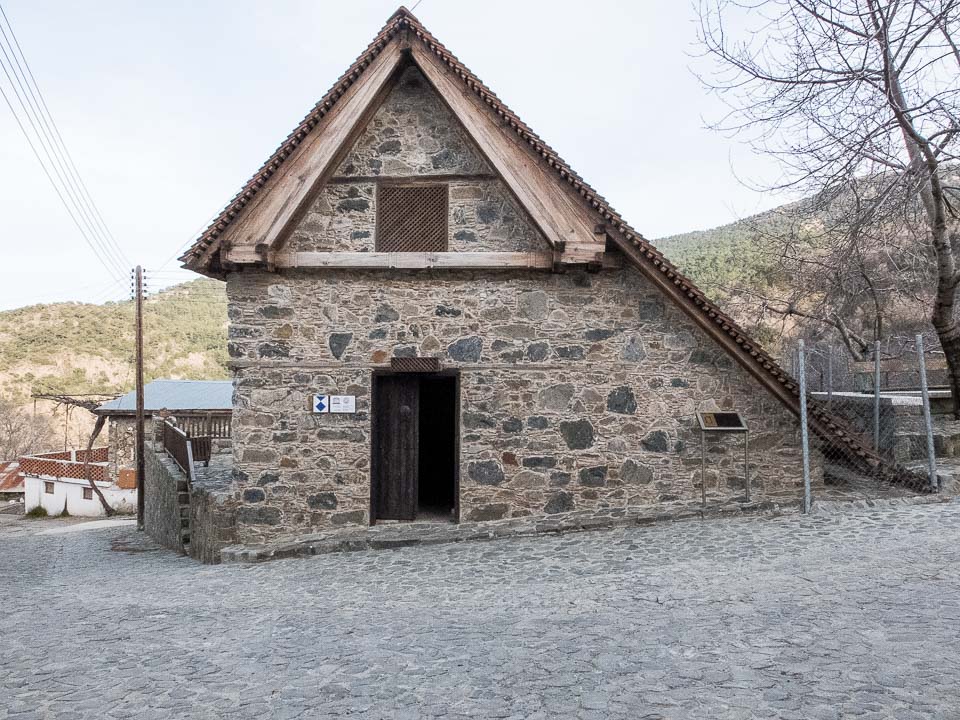
The Neolithic Settlement of Choirokoitia
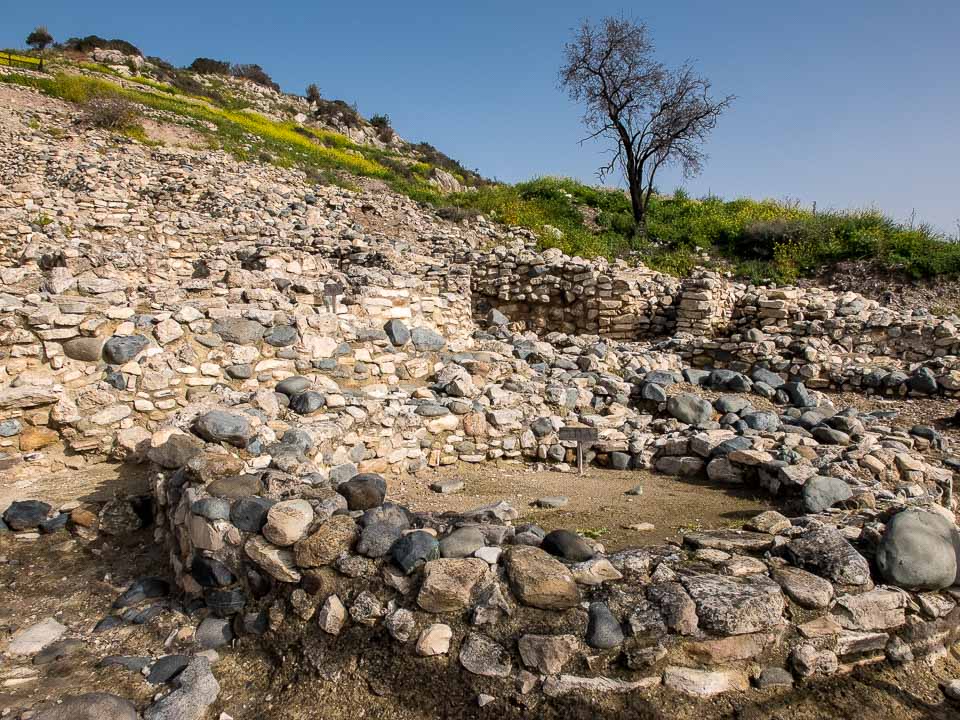
When you come across Unesco World Heritage sites like the Neolithic settlement at Choirokoitia, Cyprus, you have to use your imagination a bit. The site, in a way, looks like just a pile of rocks that stretches along a walkway that wends up a hill. But, thanks to some nice work by the archeologists, and some few didactic signs, you get a good idea of the organization of the village that dates back almost 9000 years. There are 20-some circular structures, encompassing dwellings, storage bins, and even tombs.
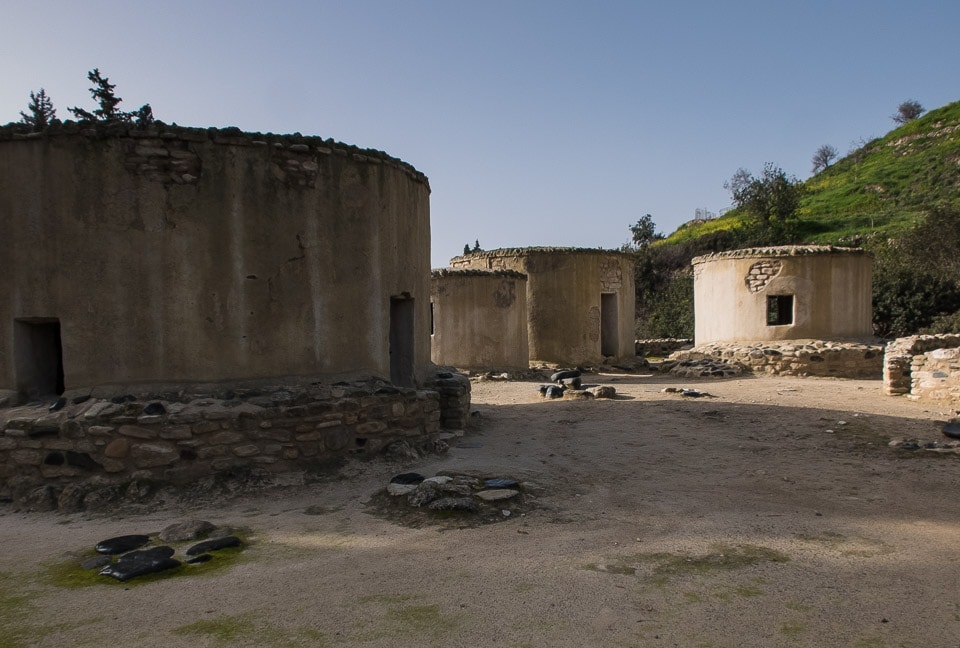
It's a small site that can be covered easily in a half hour to 45 minutes. Just walk up the hill, past the reconstructed dwellings and read the signs and look at the excavated dwellings. And do a little thinking about how these people organized themselves and cooperated to build a village, and live off shared animals and farming. In itself, the site isn't much to look at. Like I said, though, bring your imagination, and think of the life you might have lived if you'd been born into a neolithic settlement on Cyprus 9000 years ago.
The Painted Churches of Troodos, the ancient city of Paphos, and the Neolithic Settlement of Choirokoitia, are UNESCO World Heritage sites in Cyprus.
Sanctuary of Aphrodite in Kouklia
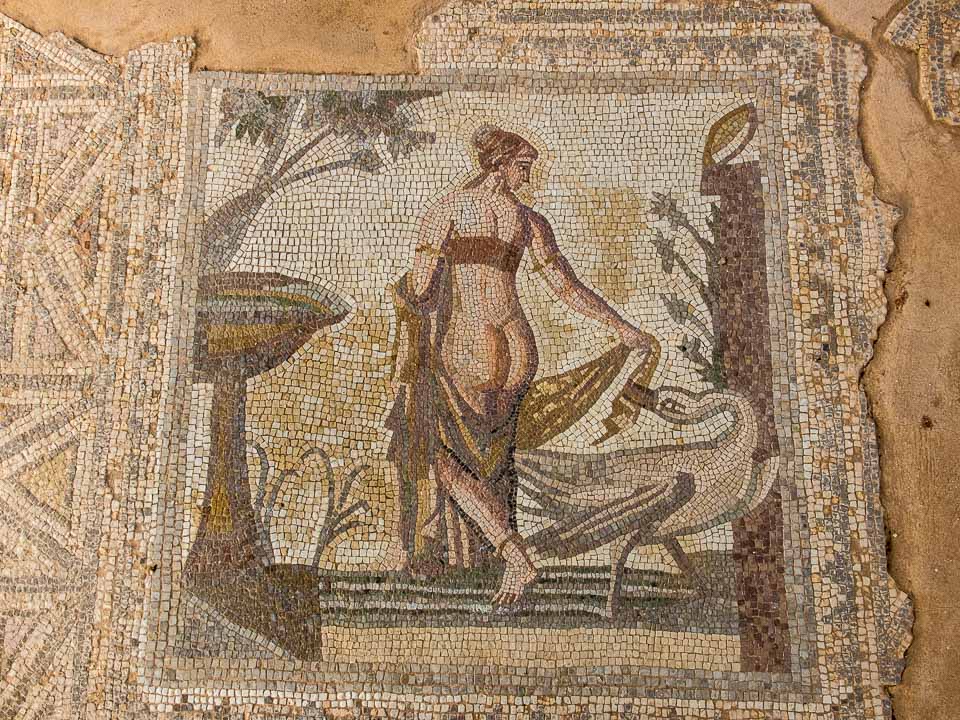
We more or less stumbled upon the Sanctuary of Aphrodite as we were starting toward the Unesco World Heritage painted churches up in the mountains of Cyprus. Legend has it that Cyprus is the birthplace of the goddess of love, and this site was her “sanctuary” dating back to 1500 B.C., long before even the supposed date of the Trojan War.
This sanctuary was the goddess's main worship site in the ancient world from the time it was built until it was left behind in the late 4th Century when Christianity took over. The site is mostly destroyed due to myriad earthquakes, intentional destruction by Christians, and scavenging building materials over the centuries for other uses.
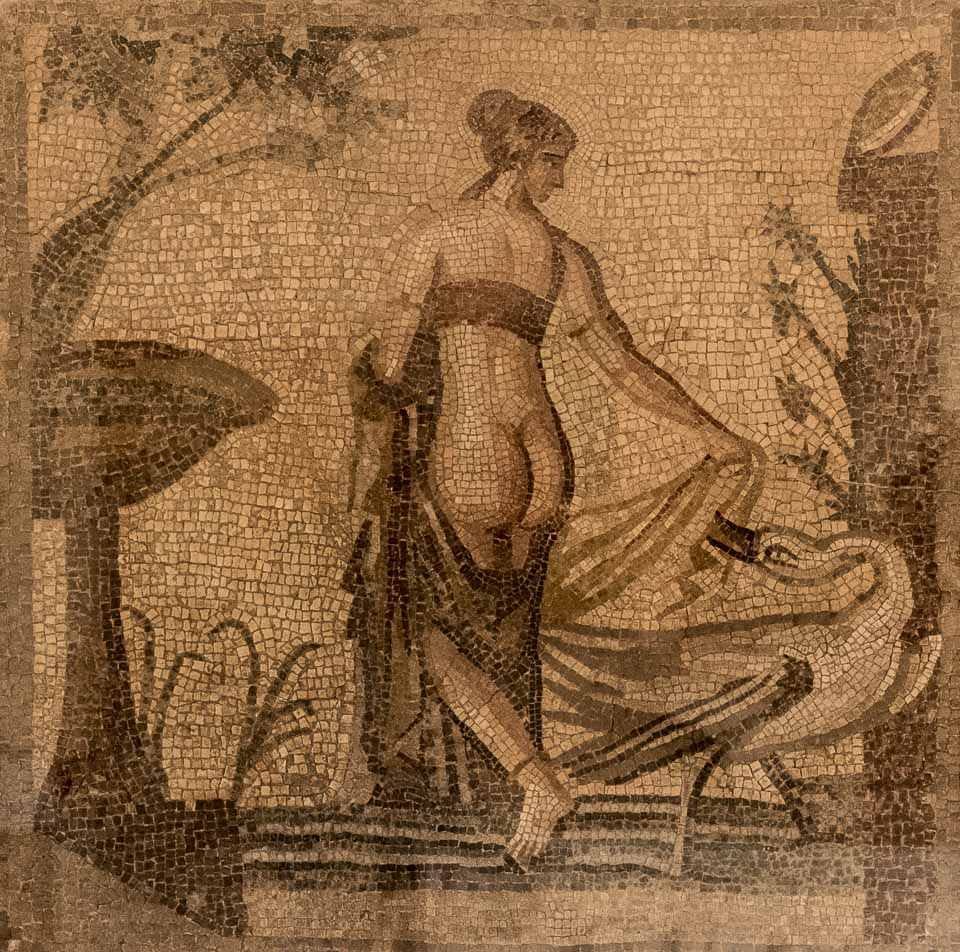
So, the site itself is rather spare, with just a few columns and fragments of walls left to suggest its early grandeur. However, there is a very nice small museum on site with plenty of artifacts from the area, and, like I said the original mosaic of Leda and the Swan that was removed long ago by treasure hunters but later recovered.
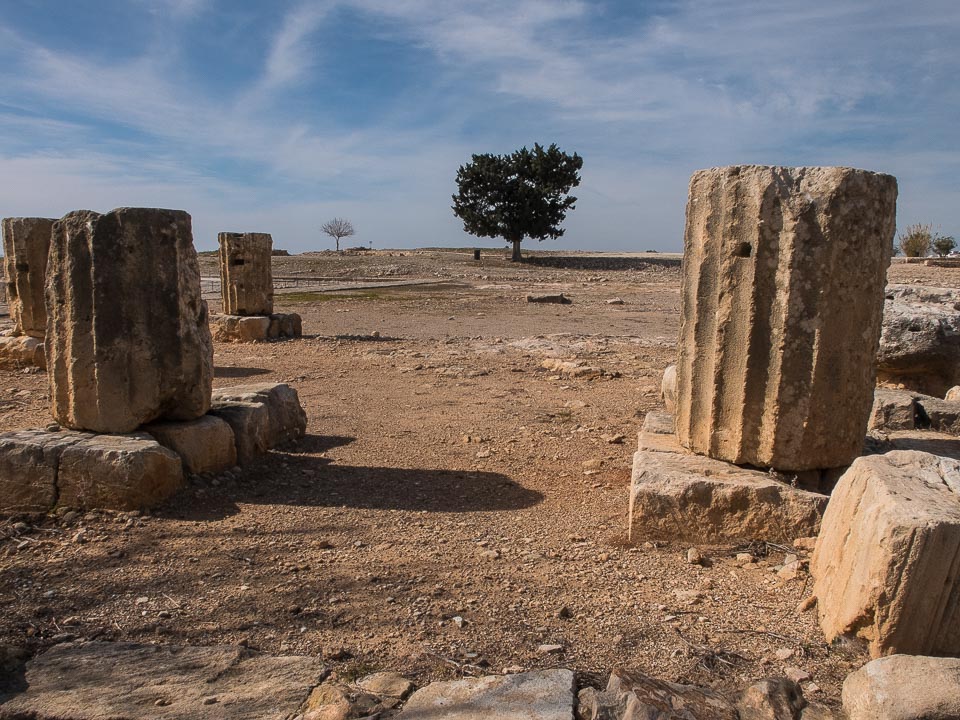
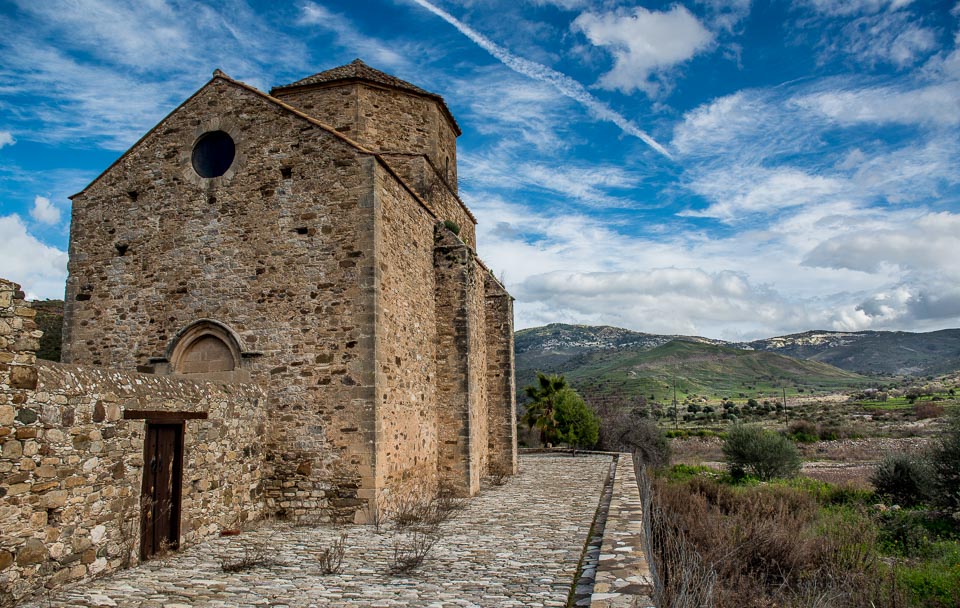
The Panagia tou Sinti Monastery
The Panagia tou Sinti Monastery is not on the list of the ten “Painted Churches” of the Troodos area that comprise the Unesco World Heritage site on Cyprus. Nevertheless, it makes for an interesting visit.
It's down in a valley that you can only reach by driving 5 kilometers on a rather dubious road. And, you'll probably never find it if you don't stop to ask somebody in one of the villages up the mountain for directions (Agia Marina or Pentalia.) where it is. And, you'll have to be lucky enough that that person you ask is the only one in that village that speaks English.
Our visit was a bit odd, and I wrote a separate post about it. It's a lovely find, though, and one more place to visit in Cyprus that enhances the experience.
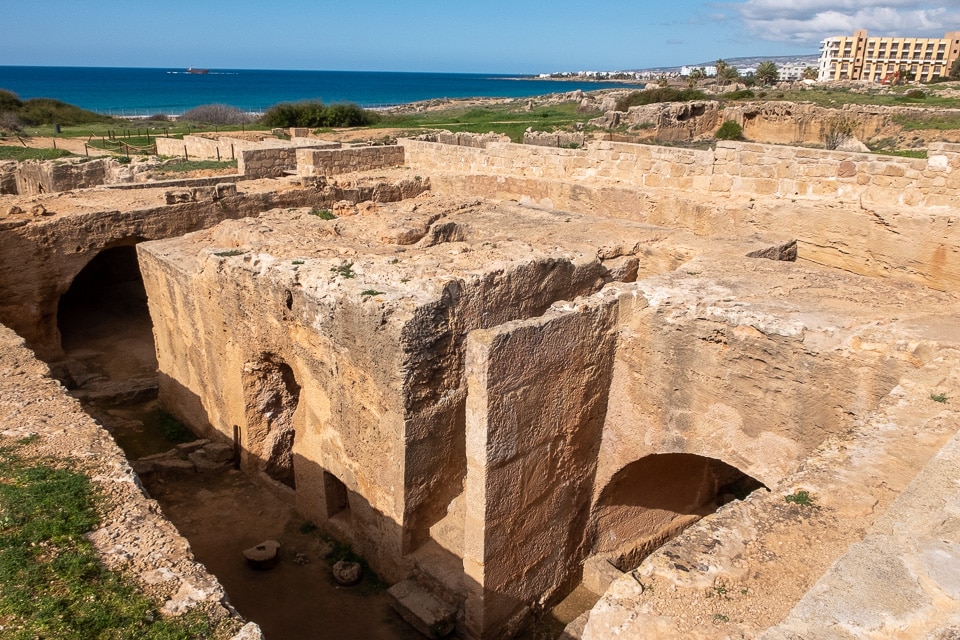
The Tombs of the Kings near Paphos
The Tombs of the Kings is a large necropolis lying about two kilometers north of Paphos. In 1980, it is part of the UNESCO World Heritage Site along with Paphos and Kouklia.
The underground tombs date to the 4th century BCE, and are carved out of solid rock. They are thought to have been the burial sites of Paphos aristocrats and high officials up to the third century CE. The name, Tombs of the Kings, comes from the magnificence of the tombs. Actually, no kings were in fact buried there. Some of the tombs feature Doric columns and frescoed walls. Archaeological excavations are still being carried out at the site.
Akamas Peninsula National Park
If you want to include some outdoor activities in your visit to Cyprus, take a drive to the Akamas Peninsula at the westernmost edge of the island. The area is home to the beautiful Blue Lagoon and the Avakas Gorge, as well as the Baths of Aphrodite, a natural pool which, according to legend, was the favorite swimming place of the Greek goddess. The peninsula is about a 90-minute drive north of Paphos.
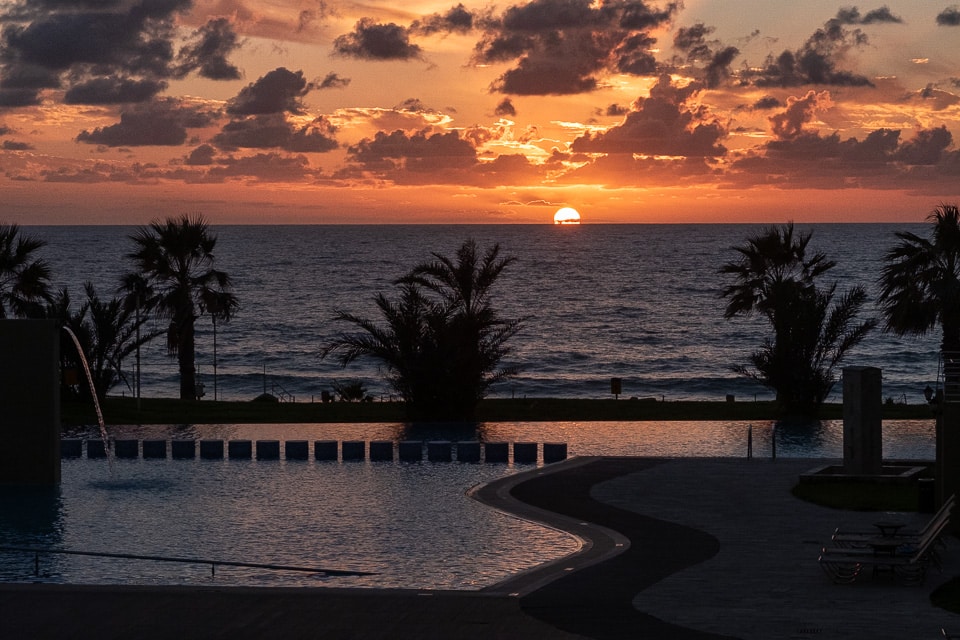
Where to stay on Cyprus
There are many lovely spots on Cyprus, but we favored staying on the western end of the island in Paphos, because of its proximity to the old city of Paphos, which was the main focus of our interests. We stayed at the Capital Coast Resort and Spa, which featured beautiful sunsets, and was very reasonably priced.
Up Your Travel Skills
Looking to book your next trip? Use these resources that are tried and tested by us. First, to get our best travel tips, sign up for our email newsletter. Then, be sure to start your reading with our Resources Page where we highlight all the great travel companies and products that we trust. Travel Accessories: Check out our list of all the accessories we carry to make getting there and being there a lot easier. Credit Cards: See our detailed post on how to choose the right travel rewards credit card for you. Flights: Start finding the very best flight deals by subscribing to Thrifty Traveler. Book your Hotel: Find the best prices on hotels with Booking.com. Travel insurance: We recommend the annual plan with Allianz Travel Insurance. See all of the gear and books we like in one place on our Amazon shop.Got a comment on this post? Join the conversation on Facebook, Instagram, or Threads and share your thoughts!

